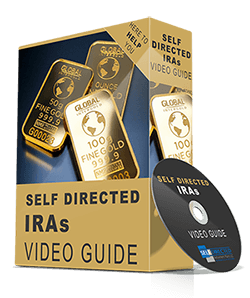Retirement will catch up with you regardless of whether you work for someone else or you are self-employed. Since you are your own boss when self-employed, you have the control of how the funds in your business are channeled in and out, so be sure to include saving towards your retirement in your priority list.
There are various Self Employed Retirement Savings options available in the market that anyone who is self-employed and is looking for an investment option can explore. Defined below are some of those options, and how you can set them up.
- A Solo 401(K) Plan
This plan is similar to the regular 401(k) plan, only difference is in this case the participant is both an employee and employer. The participant as the employee makes the typical employee contribution plus an additional 25% of the net earnings from the business. You can make non-deductible contributions by setting up a Roth 401(k) and then make tax-free withdrawals after retirement.
Our company – Self Directed Retirement Plans LLC – specializes in these type of accounts. Anyone self-employed with full-time no employees can establish a “Solo K”. The term Solo is a misnomer because this type of plan can include the spouse and partners of the sponsoring entities.
There is a contribution limit that is set for a Solo 401(k) plan. The personal deferral is capped at $22,500 if you are under 50 and $30,000 if you are 50 and older. The profit share can raise these amounts to $66,500 and $73,000. - Simplified Employee Pension(SEP) IRA
With this kind of investment option, an IRA for each employee is set up by the business owner and only the employer can make a contribution. The SEP IRA gives an excellent alternative for small businesses or people who are self-employed but do not qualify for a solo 401(k) mentioned earlier. If you also have employees and are looking to set up a retirement plan for your company at low cost, this plan is for you.
If you wish to set up a SEP IRA, you will be required to first fill a form with the IRS and then open a SEP account at a financial institution or a bank of your choice. The SEP investment option has a contribution limit as well. The limit as at 2022 was $61,000 and $66,000 in 2023 regardless of your age - Savings Incentive Match Plan for Employees (SIMPLE) IRA
If you are a small business owner and have a 100 or less employees, this is the ideal plan for you. Contributions can be made by both the employer and the employee. Setting up a SIMPLE IRA requires you to fill a relevant IRS form and then visit a bank or other financial institution of your choice and open up a SIMPLE IRA.
Employees are qualified for this plan if their earnings are greater than 5,000 dollars. The limit set for such employees for a 2023 contribution is 15,500 dollars. The employer can contribute up to 2% fixed contribution or a 3% similar contribution for every employee. If you are above 50 years, you can ‘catch up’ with an extra 3,500 dollars every year. - Traditional or Roth IRA
You can also operate a Roth IRA or a traditional IRA in addition to one of the business-sponsored accounts described earlier. Anyone who is earning some taxable income can make a contribution to an IRA which can be set up at a financial institution or bank offering this investment option plan.
The contribution limits for both traditional and Roth IRAs are capped at 6,500 dollars if you are below 50 years of age. The limit for those people who are 50 years and above is capped at 7,500 dollars. The contributions to a Roth IRA may be restricted by income.

Rick Pendykoski is the owner of Self Directed Retirement Plans LLC, a retirement planning firm based in Goodyear, AZ. He brings over 30 years of diverse experience as a financial advisor. Rick takes great pride in giving honest and very experienced advice. Rick can readily converse with business owners and people looking to take control of their retirement accounts.




